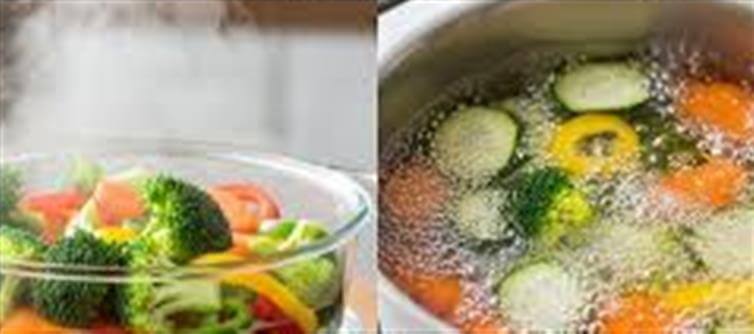
Cooking vegetables is essential for making them safe to eat, enhancing flavor, and improving digestibility. However, how you cook your vegetables can significantly affect their nutrient content, texture, and taste. Two of the most common methods are steaming and boiling, and understanding their differences can help you make healthier choices.
1. Steaming Vegetables
Steaming involves cooking vegetables using the steam from boiling water without letting them touch the water directly.
Benefits:
· Higher Nutrient Retention: Steaming preserves water-soluble vitamins like Vitamin C and B-complex vitamins, which can leach into water during boiling.
· Better Texture and Color: Steamed vegetables retain a crisp-tender texture and vibrant colors, making them visually appealing.
· Less Fat Needed: No oil or fat is necessary, making it a low-calorie cooking method.
Ideal For:
· Leafy greens like spinach, kale, and fenugreek
· Cruciferous vegetables like broccoli, cauliflower, and cabbage
2. Boiling Vegetables
Boiling means cooking vegetables directly in water at high heat until tender.
Pros:
· Quick and easy for larger quantities
· Good for making soups, stocks, and purees
Cons:
· Nutrient Loss: Many vitamins and minerals (especially water-soluble ones) dissolve into the cooking water and are often discarded.
· Mushy Texture: Overboiling can lead to soft, unappealing vegetables.
· Flavor Loss: Some natural flavors can leach out into the water.
3. Nutrient Comparison
Research shows that steaming generally retains more nutrients than boiling. For example:
Vegetable
Vitamin C Retained (Steaming)
Vitamin C Retained (Boiling)
Broccoli
90%
50%
Carrots
90%
70%
Spinach
80%
60%
This shows that steaming can preserve 20–50% more vitamins compared to boiling.
4. Tips to Maximize Nutrient Retention
· Don’t overcook: Both boiling and steaming should be done until vegetables are just tender.
· Use minimal water for boiling: If boiling, use as little water as possible and consider using the cooking water in soups or gravies to retain nutrients.
· Cut vegetables uniformly: Ensures even cooking and prevents overexposure to heat.
✅ Conclusion
While both steaming and boiling make vegetables edible and digestible, steaming is the healthier choice if your goal is to retain maximum nutrients, flavor, and color. Boiling can still be useful for soups or stocks, but consider using the cooking water to prevent nutrient loss.
Disclaimer:
The views and opinions expressed in this article are those of the author and do not necessarily reflect the official policy or position of any agency, organization, employer, or company. All information provided is for general informational purposes only. While every effort has been made to ensure accuracy, we make no representations or warranties of any kind, express or implied, about the completeness, reliability, or suitability of the information contained herein. Readers are advised to verify facts and seek professional advice where necessary. Any reliance placed on such information is strictly at the reader’s own risk..jpg)




 click and follow Indiaherald WhatsApp channel
click and follow Indiaherald WhatsApp channel